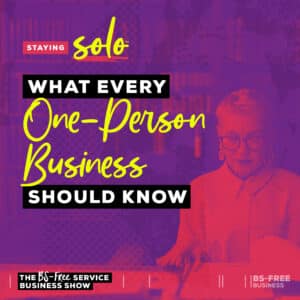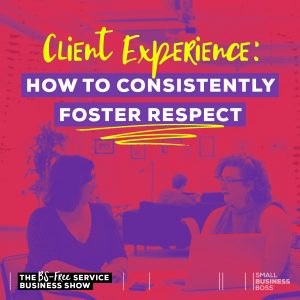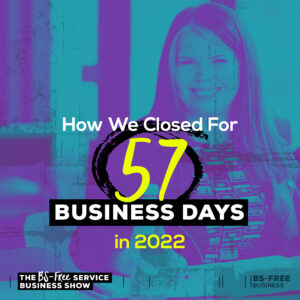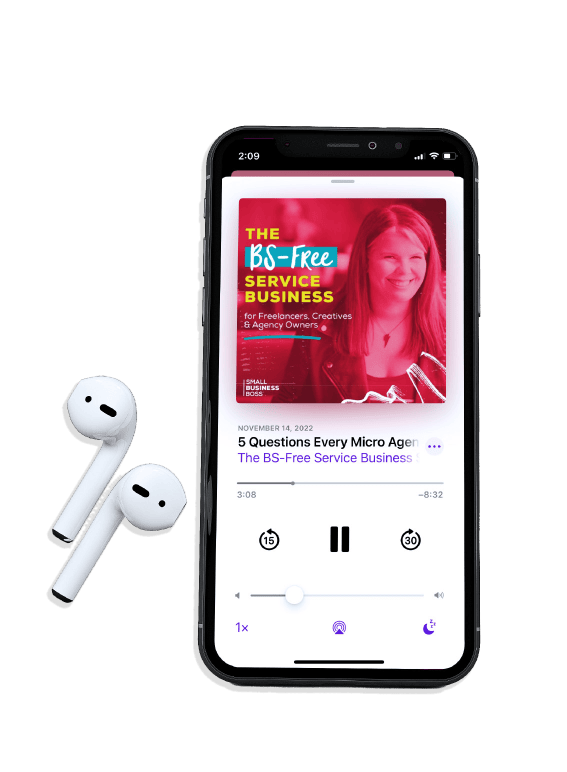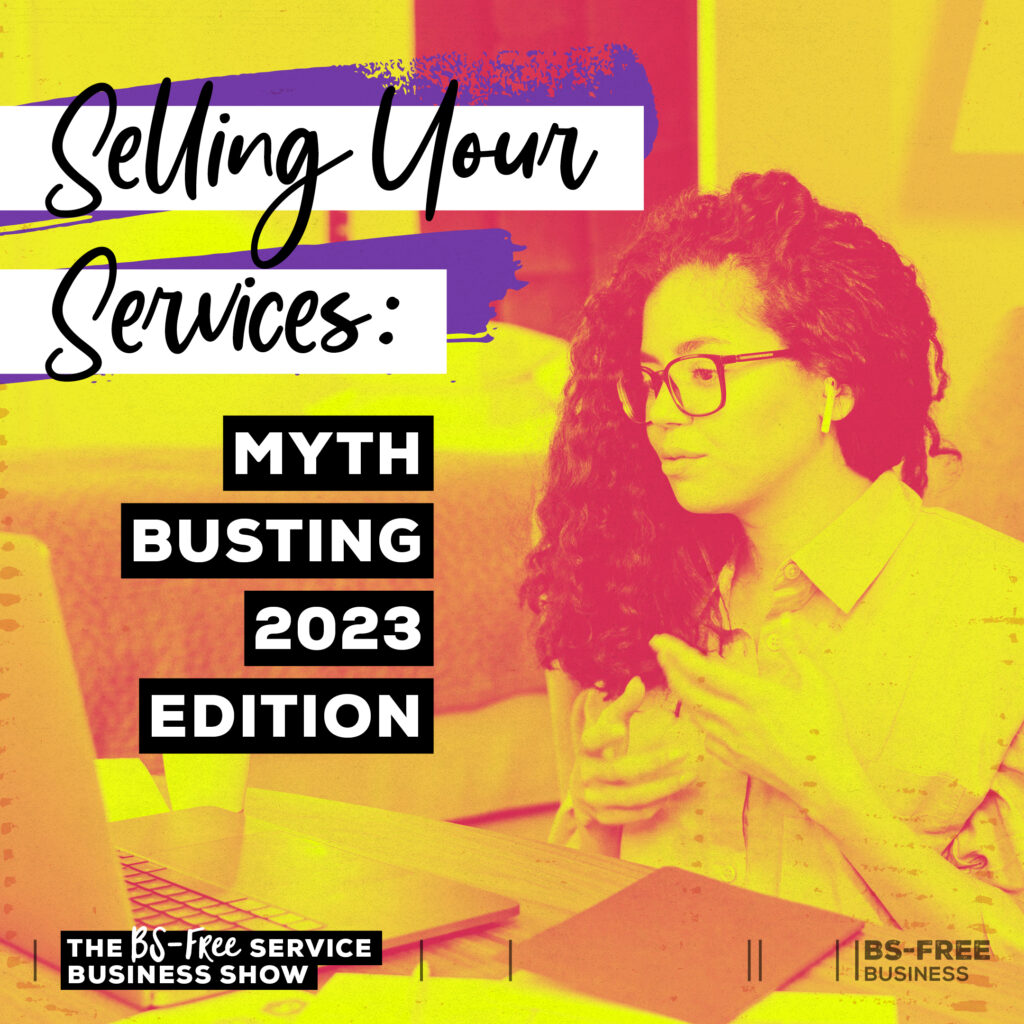
Search the site:
Selling Your Services: Myth Busting 2023 Edition
Confused about the latest trends or advice on selling your services? You’re not alone in that, as there’s so much advice out there, that is confusing and contradictory. In this episode, we’re looking at myths about selling your services with a dose of my signature BS-busting.
A new season of the BS-Free Service Business show starts now.
Sales are one of those things that can seem a little mysterious to most business owners. Especially as there are so many narratives around sales in western culture, from the idea of what someone good at sales is like to the idea sales is “hard.”
Then add in a whole lot of downright terrible sales advice taught in the online business world, and it’s no surprise that we feel like we’re not the best at sales or need some big fancy system.
That’s exactly why I wanted to talk about selling your services and myths around sales that abound in the online business world. And by the end of this episode, I hope you see that selling your services can be simple. You don’t need a sophisticated sales system; you just need to stick to simple processes that work for you and your clients.
What is Sales?
I often see people conflating sales and marketing when really they’re two entirely different disciplines. They each have a different focus and require different skill sets, yet in the online business world, they’re often treated as being interchangeable.
First, let’s define what we mean by sales. Hubspot has a fantastic post that outlines what sales are and defines different types of sales, which is definitely worth checking out. They define sales as “the activities that lead to the selling of goods or services.”
In the context of a service business, sales are activities as what happens between when a potential client raises their hand (aka they’re a warm lead, not just someone on your email list) and when they say yes. Before that point, it’s marketing, and after they commit to working with you, that’s client service.
It may seem like I’m being a bit pedantic here, but there’s a reason. Which is not everything you do is sales, and understanding where sales fit between marketing and service is critical in looking at your sales skills and systems.
The reality is that most of us start a service business because we’re experts at something we do, not because we’re amazing marketing, sales, or client service professionals. Here’s the good news, all of those can be learned, and it comes down to having the right skills and systems in place.
It ultimately comes down to laying out a process and having a clear plan for how sales work in your business. You do not need to be investing thousands into learning how to sell or building out a process.
Start where you are. If you have a business today and clients, you already know how to sell to some degree. So this is about refining as you go.
You need to remember sales education is a lucrative industry, and people selling you sales training or programs have a vested interest in making it more complicated than it actually is.
This is why I see people confused and overwhelmed when figuring out how to make sales for their service business. Now, let’s dive into some myths around packaging, pricing, and processes for your service business
Packaging Your Services
I’m a superfan of packaging your services as it ensures you can articulate the value you deliver and save yourself from customizing every single thing for every client you work with.
But there are a few packaging-related myths that are floating around out there that we need to explore.
You Need a Signature Service
Most people who teach service providers are obsessed with the idea of a signature service, and while this has its merits, I’m mixed. A signature service is your marquee service that people know you for, and they come to you because of your expertise. It’s carefully constructed to meet a specific market need and uses your set process.
While the concept is solid and something I’ve taught for years, I’ve seen it become one-size-fits-all advice. Honestly, I’m not even sure that some of the people teaching it at this point know anything about packaging or how clients buy.
In my experience, signature services can work well for people working in the business to entrepreneur (B2E) where the buyer needs are relatively problem/solution focused. It doesn’t translate as well for the B2B market as you’re solving more complex problems and multiple solutions may be required. This is why it’s critical that you understand your target market and how they buy.
Additionally, not every type of service lends itself to being a signature service. For done-for-you creative services, you may be able to create a streamlined package, but for others, like strategic consulting, it may be more challenging.
Most of the time, I recommend clients focus on having a strategy package vs worrying about a signature service.
A strategy package, as I work with my clients on Sell the Strategy enables you to position yourself as an expert on the essential part of any client engagement, the strategy.
You Need a Signature Process
Myth busting coming in hot for this one. While I 100% believe you need simple processes to communicate how you work with clients, I’m very tired of seeing these 73-step flow charts that are confusing AF for clients.
If you’re making up a signature process for the sake of your sales, stop it right now, and please unfollow whoever is teaching that garbage. This approach is rooted in the “confusion as a sales strategy” which is common in the online space.
Truth? This is a recipe for disaster as you’ll end up with clients who are confused and unclear about what they want, and they expect you to have all the answers. Those aren’t the types of clients you want to be working with.
I’m a fan of having a signature process that you can communicate in under a minute to your client, so they know you’ve got a proven approach and they’re in good hands. Your job is to illustrate how you can help them.
For example, when having an initial call with a corporate client, I talk through what the strategy portion of the project will be (which is standard for most clients) and then explain how we will determine the scope of work beyond that based on the strategy. It’s simple for me to communicate and easy for them to see how we’ll work together.
You Only Need One Package
This just in, it’s okay to have more than one package! This myth comes from the idea that we should treat our business (and I guess, our clients) like a machine and run everyone through the same process.
Frankly, this idea that you only sell one thing or have one process is ludicrous. When people come to you as a service provider, it’s because they want help with something specific, and they don’t want to feel like a number.
I can’t even tell you how many times I’ve had to tell my clients that it’s okay to have more than one package. Maybe you don’t put everything on the website, but you can (and should) have different offers.
With my content marketing agency, we offer a range of services from case studies to blog posts to corporate communications. The reality is that most of our clients would never, ever fit into one package.
You Have to Sell X or Y
You are the expert on what you do, your clients, and how to best deliver those services. Real talk? Trends from VIP days to a specific type of retainer come and go, and you can choose what works for you.
I’ll be exploring VIP days and retainers in an upcoming episode, but you don’t have to deliver your work in a specific format to be successful. Period.
Pricing Your Services
Buckle up as we’re about to get into the myths that get me fired up. There are so many bad takes on how to sell that don’t apply to service providers but somehow bleed over, so it’s time to bust these myths.
Don’t Put Your Prices on Your Sales Page
This is direct advice from people in the online business world who treat their potential customers like they need to be convinced to buy something.
Your clients do not need to be convinced. Being transparent about your pricing is one of the best ways to ensure you’re not wasting anyone’s time and you’re being respectful of people’s budgets.
Don’t make people contact you or book a call to get the price. Put it on your sales page or website. And if you don’t have a fixed price, use starts as pricing.
You Have to Use Flat Rate Pricing
You’ve heard a million times by now that you shouldn’t trade time for dollars. Which is some oversimplified BS because that’s what work is. You’re continually trading time for dollars in some form.
The prevailing wisdom is that you should always offer flat rate pricing and that you should never charge by the hour. My answer here is nuanced, as while flat rate pricing can help ensure you’re being paid for the value you deliver, it can also backfire.
This is a myth, as you can price in the best way for you and your clients. You can go flat rate, or you can go hourly, as long as you’re charging a high enough hourly rate.
I’ve spoken to many service providers who do work that is best covered by hourly pricing that accounts for their experience level, speed, etc. They’re happy with this, and their clients are happy with it, so why would they change?
So many of these myths don’t account for different types of businesses, industries, or even working styles. There are no absolutes, and I use hourly and flat-rate pricing in my agency. I like to have options that will best serve our clients (and us, for that matter) based on the specific situation.
You Should Have High-Ticket Pricing
Listen, one of the most common pieces of guidance I give to my clients is to raise their prices. You probably need to raise your prices, so consider this a reminder.
That said, pricing in the online business world is out of hand. Everything has a high ticket price tag and we’ve reached the point where the value is often a mismatch with the actual deliverables. I’ve found myself more than once in recent weeks trying to figure out how someone arrived at an absolutely ridiculous price.
You don’t need to have high-ticket pricing. Don’t listen to this for a moment, as it’s designed to sell you something to teach you how to sell high-ticket items that will literally destroy your service business and, very likely, your soul. (And probably your bank account.)
I want you to get paid. But I also want you to operate in a way that’s in integrity and is not about price gouging your clients. Because what we don’t see (but I know is happening) is how people raise their prices based on their needs and they price themselves out of the market.
That’s unlikely the situation any of you are in, but next time some big-name coach pushes their high ticket thing, question if that’s the right move for you and your business.
Your Sales Processes
When I talk about the sales process, I’m referring to the things that enable you to sell to your clients, such as your consult call process, sales pages, and proposals.
This is where I see a lot of confounding ideas about how to sell services that we need to set on fire in the next few minutes.
Don’t Waste Your Time on Sales Calls
I will be overjoyed when this myth goes away for good, but sales calls get a bad rap. There are so many tactics now that have been created to avoid talking to potential clients, from webinars to convoluted application forms that ask for your entire life story.
This avoidance only makes the sales process more complicated than needed, and it actively repels clients who may want to work with you.
For example, if you’re selling a service and need 10 new clients a year, creating and setting up a webinar is a lot of work for very little return on your time. Plus, you’re missing a key opportunity to have a conversation to vet your potential client.
Honestly, just do the sales call. Focus on setting up a system to ensure that people are legit potential clients and not just seeking free advice, and create constraints around the call. It’s not to talk about strategy or give advice but to discuss how you’ll work together.
If sales calls are not your thing, consider alternatives like Voxer where someone can connect with you without being on your calendar. I’ve been using this more and more with potential consulting clients for BS-Free Business and it’s a great way to chat without trying to find a time to talk.
It’s worth noting that while Voxer works well for BS-Free Business clients, that’s not something I see working for corporate clients. This a great example of needing to know your audience.
You Do/Don’t Need a Sales Page
Depending on who you talk to about sales pages, you’ll get a different answer, so I included this as a myth. In the online business realm, sales pages are seen as the be-all and end-all, and while they’re great for a program or course, they’re not always a good fit for services.
Think of it this way. A program is more of a do-it-yourself offer, so you expect to read a long sales page and review the offer details. A service is a done-for-you offer, so someone wants the basic details and likely wants to talk to you.
If you focus on the B2E market, I recommend you have a short sales page so someone can assess if the service is the right fit for them. You don’t need a long, repetitive launch formula sales page for a service.
Plus, the more complex your service is, the less likely it is that someone is going to visit your sales page and buy directly from the page. For BS-Free Business, we sell consulting packages such as Sell the Strategy and the BS-Free Intensive directly from the sales page, but most of the time, there’s a conversation on Zoom, Voxer, or DMs that happens between when they read the page, and when they purchase.
If you focus on the B2B market, you likely just need a high-level service page unless you’re offering a productized service. Don’t waste your time or your potential clients, as they’re simply not going to read it, let alone buy from it.
Proposals are a Waste of Time
We’ve reached our final myth, which, if you’ve been listening to this show for a while, you know I have strong feelings about. Proposals are powerful sales tools, yet so many people in the online market like to talk trash about them and say they’re a waste of time.
The joke is on them. I’ve sold millions of dollars of services with my proposals, and I don’t plan to stop. Building on the sales page myth above, there’s a time and place for proposals.
If you sell to B2B or corporate clients, proposals are a must. And if you sell done-for-you creative services, they’re likely a fit as well.
Much of the pushback on proposals comes from the time involved in creating a proposal. Honestly, I don’t get this as most proposals I can create in 15 to 30 minutes using my template, and it’s a powerful decision-making tool for the client. And I do NOT create proposals for anyone who I don’t want to work with or whose budget expectations are not aligned.
I’ve been told dozens of times throughout my career that I won the business because of the thought and detail in the proposal. If you want the business, investing a bit of time in a proposal for a client that’s a good fit is always time well spent.
Selling Your Services: Simple and Sustainable is the Way to Go
That wraps up our myths; I’m sure I’ll find some new ones to discuss in a future episode.
I’ve been selling services for over 20 years, and my sales processes have always been simple. I use the same systems I used when I worked full-time in an agency, a big part of my role was to land new clients. Then I tweaked those once I went out on my own and was fully responsible for sales for the business.
Even with all those years of sales experience, I’m not the slickest seller, but what I do works. I share that as you’re probably closer than you think regarding your sales skills/systems, and you can refine them over time.
This is also a testament to the fact that trends come and go, but solid sales systems will stand the test of time for your service business. So it’s worth investing a little time and focusing on improving them in 2023.
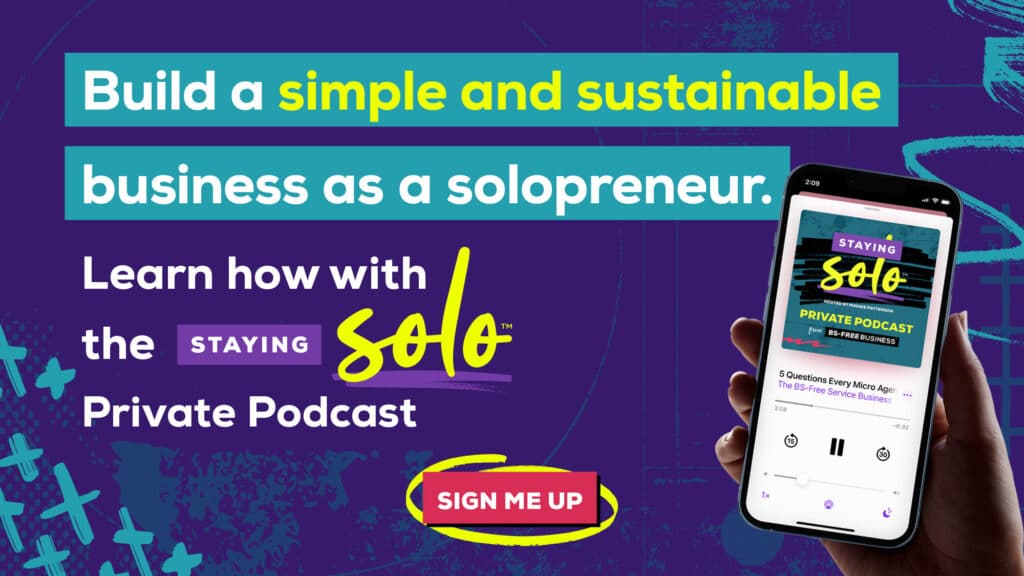

I’m Maggie Patterson (she/her), and services businesses are my business.
I have 20+ years of experience with client services, am a consultant for agency owners, creatives, and consultants, and vocal advocate for humane business practices rooted in empathy, respect, and trust.
Help Not Hype

Tired of the same old BS business advice?
I got you with weekly emails packed full of proven strategy that makes a real difference in your service business.

